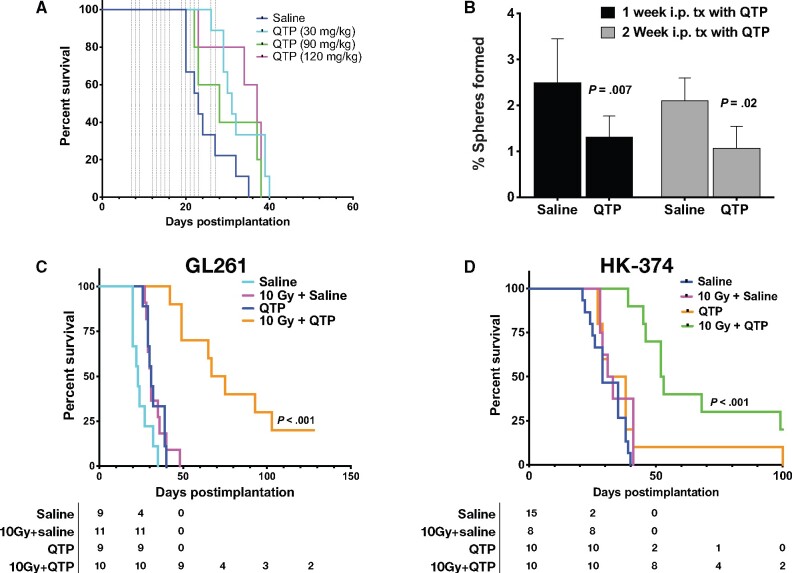Figure 2.
A combination of quetiapine and radiation prolongs survival in mouse models of glioblastoma. (A) Dose escalation of quetiapine (QTP) in GL261 tumor-bearing C57Bl/6 mice. Seven days after injection of the tumor cells the animals were treated with escalating doses of quetiapine. Five daily doses of quetiapine per week for 3 weeks led to a statistically significant gain in the median survival (hazard ratio [HR] of control vs quetiapine = 2.64, 95% confidence interval [CI] = 0.93 to 7.44) with no clear dose dependency. (B) Treatment of GL261 tumor-bearing C57BL/6 mice with quetiapine reduces the sphere-forming capacity of surviving tumor cells. This experiment has been performed with at least 2 independent biological repeats (unpaired Student t test). (C and D) A single dose of 10 Gy or daily injection of quetiapine alone had small effects on medical survival (HR of control vs 10 Gy = 2.66, 95% CI = 0.94 to 7.49; HR control vs quetiapine = 3.96, 95% CI = 0.29 to 12.40). A combination of radiation (10 Gy) and daily injections of quetiapine statistically significantly prolongs survival in the GL261 glioma mouse model (HR of control vs quetiapine and 10 Gy = 5.46, 95% CI = 1.54 to 19.32) (C). Likewise, in mice carrying patient-derived orthotopic xenografts, radiation or quetiapine alone led to only small increases in median survival (HR of control vs quetiapine = 1.95; control vs 10 Gy = 1.77), whereas the combined treatment statistically significantly prolonged median survival from 27.5 to 52.5 days (log-rank HR = 4.70, 95% CI = 1.90 to 11.62) (D). All statistical tests were 2-sided. i.p. = intraperitoneal; tx = treatment.

